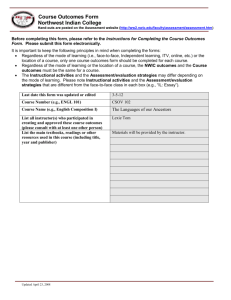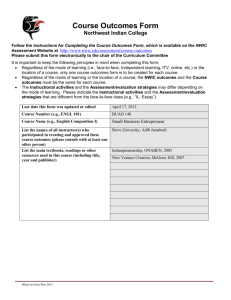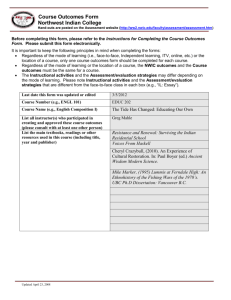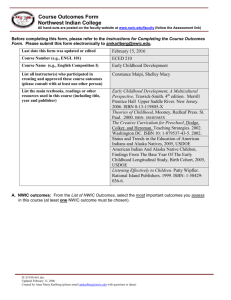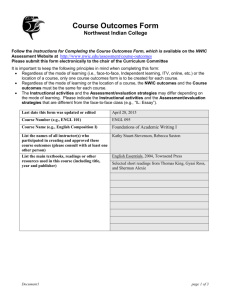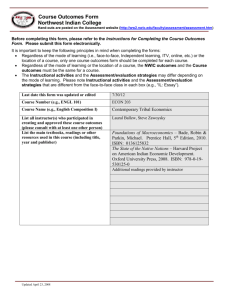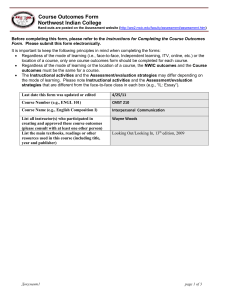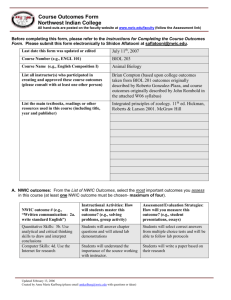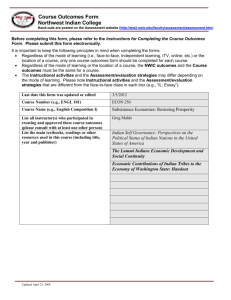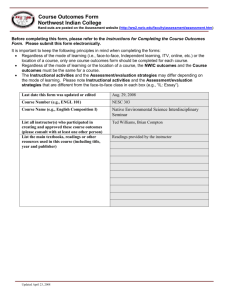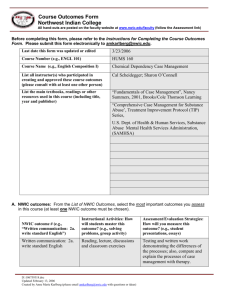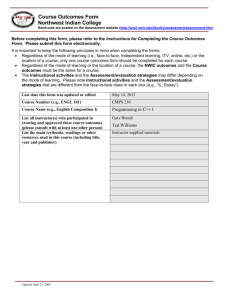ENGL 100 - Northwest Indian College
advertisement
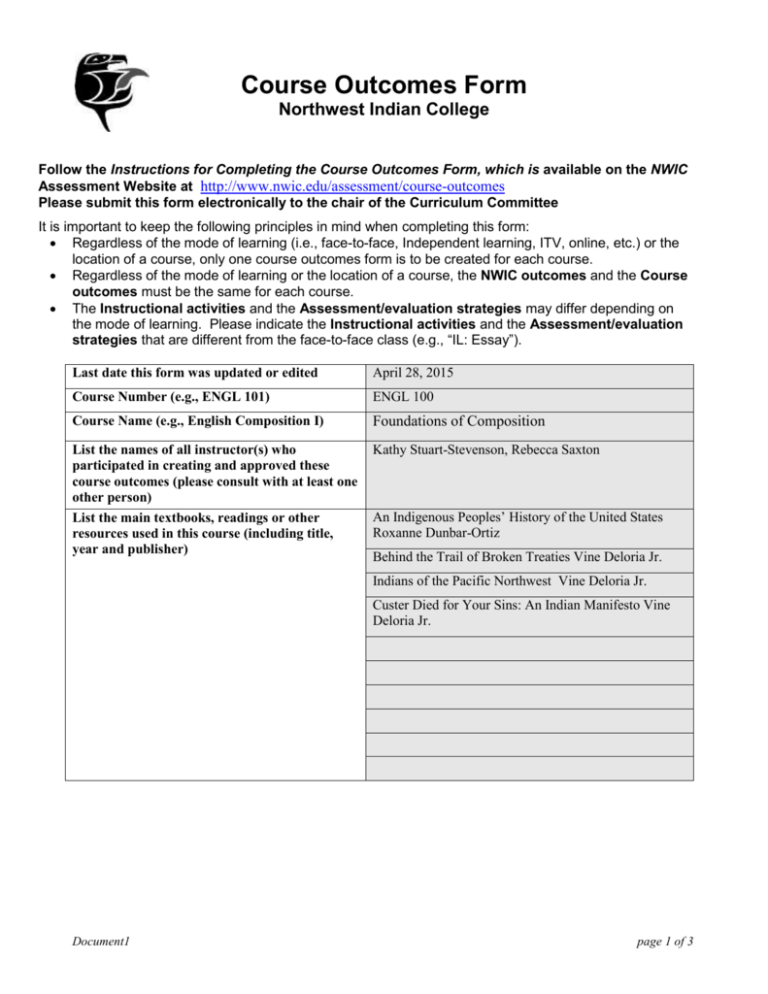
Course Outcomes Form Northwest Indian College Follow the Instructions for Completing the Course Outcomes Form, which is available on the NWIC Assessment Website at http://www.nwic.edu/assessment/course-outcomes Please submit this form electronically to the chair of the Curriculum Committee It is important to keep the following principles in mind when completing this form: Regardless of the mode of learning (i.e., face-to-face, Independent learning, ITV, online, etc.) or the location of a course, only one course outcomes form is to be created for each course. Regardless of the mode of learning or the location of a course, the NWIC outcomes and the Course outcomes must be the same for each course. The Instructional activities and the Assessment/evaluation strategies may differ depending on the mode of learning. Please indicate the Instructional activities and the Assessment/evaluation strategies that are different from the face-to-face class (e.g., “IL: Essay”). Last date this form was updated or edited April 28, 2015 Course Number (e.g., ENGL 101) ENGL 100 Course Name (e.g., English Composition I) Foundations of Composition List the names of all instructor(s) who participated in creating and approved these course outcomes (please consult with at least one other person) List the main textbooks, readings or other resources used in this course (including title, year and publisher) Kathy Stuart-Stevenson, Rebecca Saxton An Indigenous Peoples’ History of the United States Roxanne Dunbar-Ortiz Behind the Trail of Broken Treaties Vine Deloria Jr. Indians of the Pacific Northwest Vine Deloria Jr. Custer Died for Your Sins: An Indian Manifesto Vine Deloria Jr. Document1 page 1 of 3 A. NWIC outcomes: From the List of NWIC Outcomes, select the most important outcomes you assess in this course (at least one NWIC outcome must be chosen- maximum of four). NWIC outcome # (e.g., “Written communication: 2a. Write Standard English”) Native Leadership-To acquire a quality education: 1a. Effectively communicate in diverse situations, from receiving to expressing information, both verbally and non-verbally Instructional Activities: How will students master this outcome? (e.g., solving problems, group activity) Group work, grammar/punctuation/spelling review, lecture, organizing writing practice, writing as a “process” activities, close reading, research Assessment/Evaluation Strategies: How will you measure this outcome? (e.g., student presentations, essays) Peer review/editing, note-taking and vocabulary log, completed templates/drafts/essays B. Course outcomes: In order of priority, list the most important other learning outcomes for this course that you assess (a maximum of 10). Other course outcomes: Complete the sentence – As a result of this course, students will be able to… Instructional Activities: How will students master this outcome? (e.g., solving problems, group activity) Assessment / Evaluation Strategies: How will you measure this outcome? (e.g., student presentations, essays) Use academic voice to write papers using Standard English Lecture, group work, peer review and editing Essays/Final Project Read a range of types of material, with an emphasis on informational and historical texts and understand that close and critical reading/analysis allows writers to understand how and why texts create meaning. Student articulates a thesis, uses transitions, and states a conclusion and organizes ideas in academic style Lecture, group work Highlighting and annotating, discussion of main ideas, essays Lecture, in-class activities (templates and drafting), group work, opportunity to continue to revise on-time assignments and do further research Lecture, research, Indigenous Service Learning project Essays/Final Project Lecture, group work, critical thinking activities, research, library visit Essays, Final Project/Process paper When confronted with a recognizable problem or issue from a certain discipline, student can articulate what a reasonable solution might be and describe a process for reaching that solution Student organizes and identifies premises and conclusions in their own thinking, conducts inquiry/formulates questions, and makes claims based on external evidence (something Document1 Final Project/Process paper page 2 of 3 beyond the student’s own memories) C. List the NWIC outcomes and course outcomes from above on your syllabus. D. Assess the NWIC outcomes and course outcomes, which are listed above, in your classes. Document1 page 2 of 3
